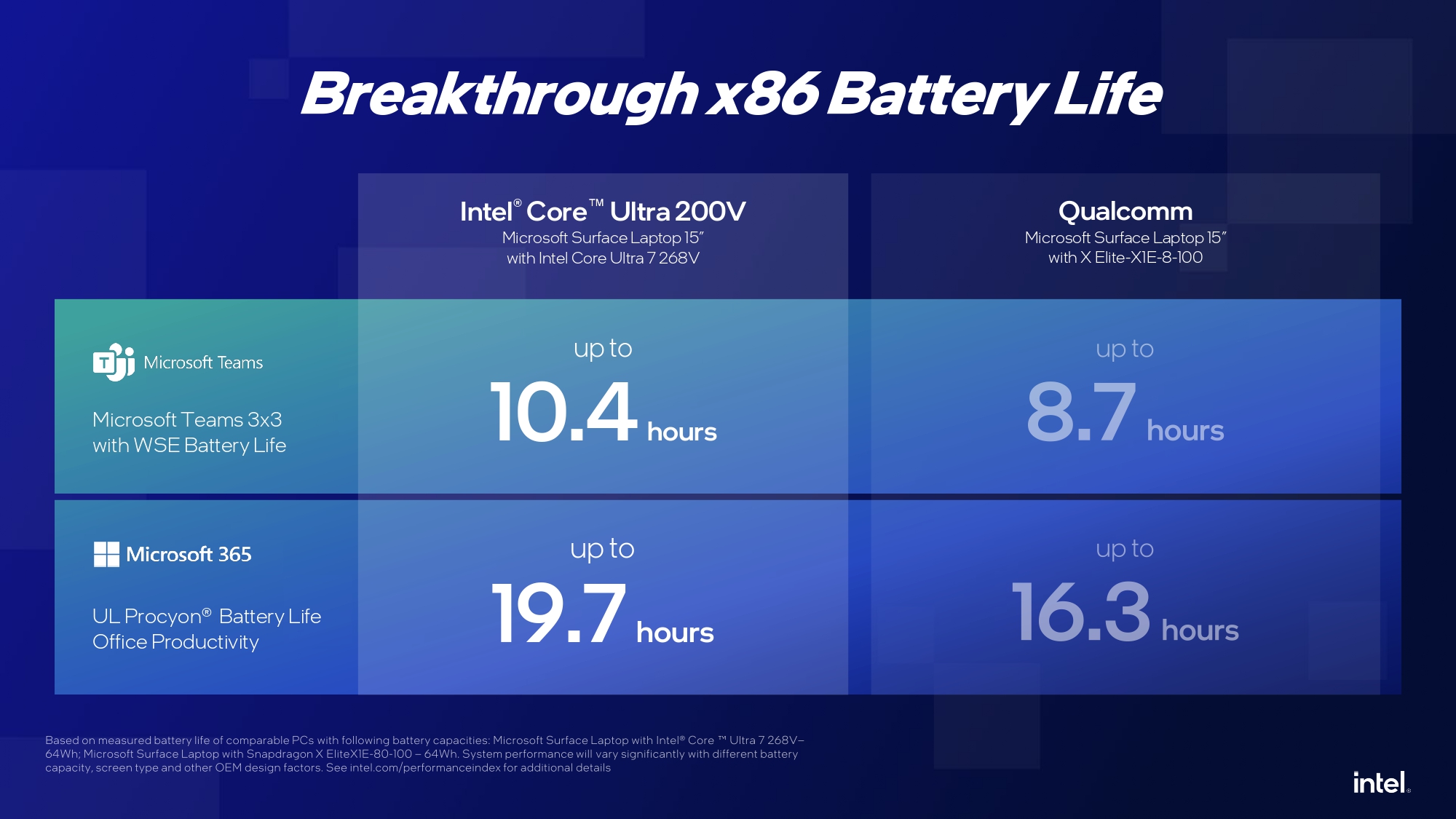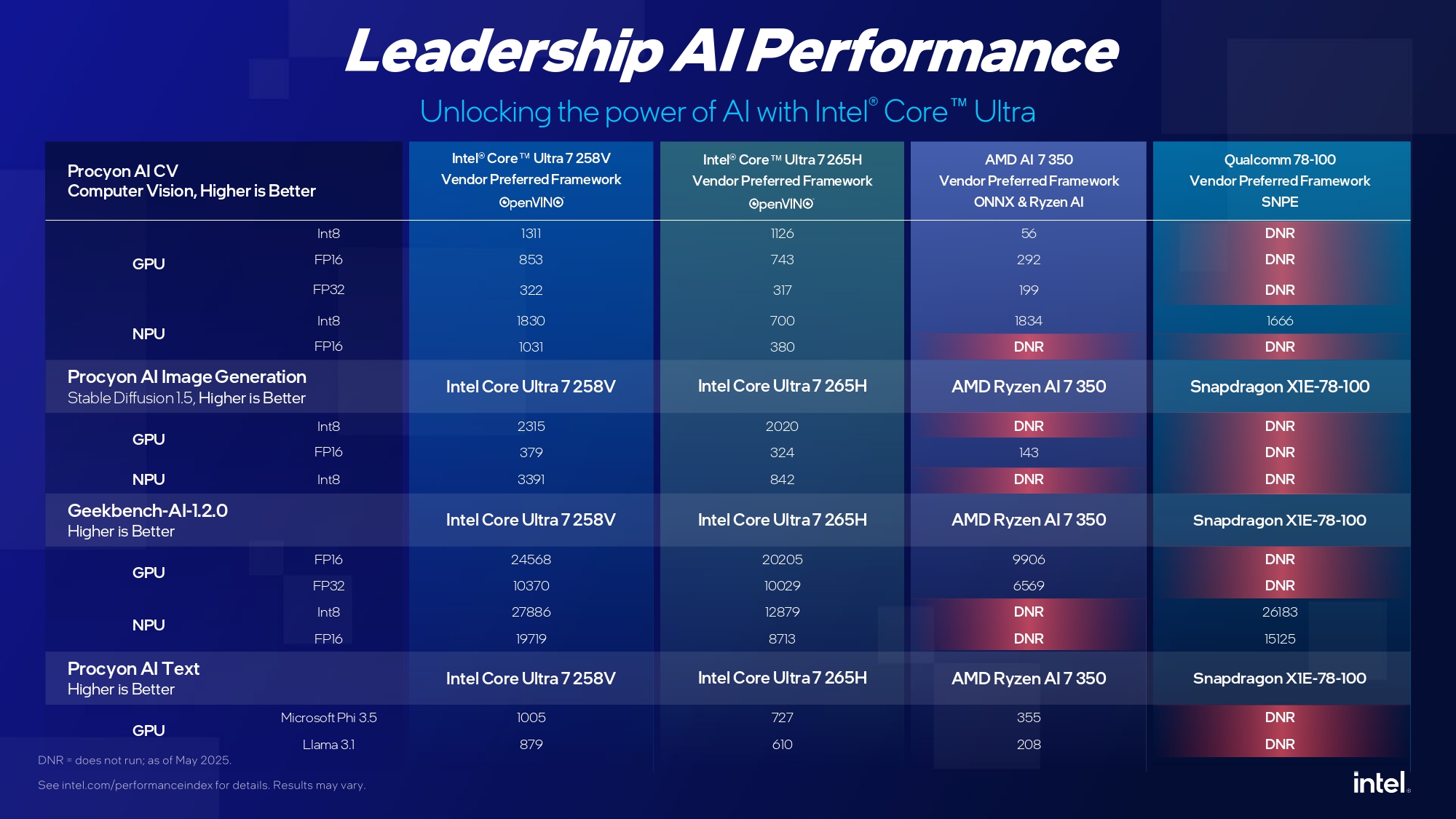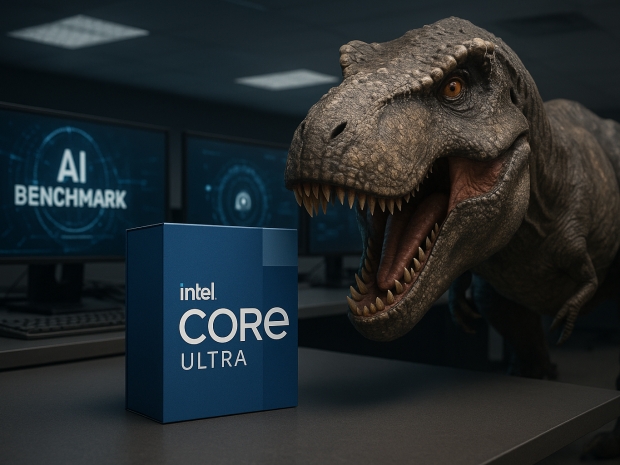Unveiled during a Client update sideshow at Computex 2025, the Core Ultra 200V series is being pitched as Chipzilla's most efficient mobile SoC yet. It's been stuffed with NPUs to rake in those all-important AI TOPS numbers. According to Intel, Lunar Lake isn't just sipping power gently; it’s dominating in AI workloads, graphics, and even battery life.
Intel reckons it's lapping Qualcomm's Snapdragon X Elite chips in common battery killers like Microsoft Teams and Office, touting more than three hours of extra battery in some cases.


For the AI nerds, Intel threw its Core Ultra 7 258V into a silicon scrap with AMD's Ryzen AI 7 350 (Strix Point) and the Snapdragon X1E-78-100. The results, naturally from Intel's own labs, showed Lunar Lake coming out on top in tests like Procyon AI CV and Geekbench AI across INT8, FP16, and FP32 settings.
It's all a bit of self-congratulation, but there's something to be said for putting the AI angle front and centre. With Lunar Lake, Intel seems to have finally built a chip that does more than just burn a hole in your lap.
Of course, it's only the beginning. Chipzilla is already hyping its next big thing: Panther Lake. Supposedly a performance beast, it's pencilled in for the first half of 2026, and will no doubt be even more efficient, even more AI-fuelled, and come with twice as many awkwardly named SKUs.
For now, though, Lunar Lake is Intel's latest attempt at proving it still matters, at least until someone else runs independent benchmarks.




